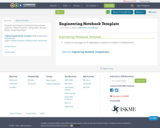
Template of an Engineering Notebook that includes pages for:
- Table of Contents
- Design Brief
- Decision Matrix
- Graph Paper Pages
- Subject:
- Applied Science
- Engineering
- Material Type:
- Student Guide
- Date Added:
- 12/06/2018

Template of an Engineering Notebook that includes pages for:
- Table of Contents
- Design Brief
- Decision Matrix
- Graph Paper Pages
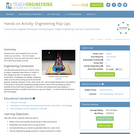
Students learn about applied forces as they create pop-up-books the art of paper engineering. They also learn the basic steps of the engineering design process.
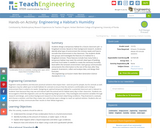
Students design a temporary habitat for a future classroom pet—a hingeback tortoise. Based on their background research, students identify what type of environment this tortoise needs and how to recreate that environment in the classroom. The students divide into groups and investigate the features of a habitat for a hingeback tortoise. These features include how many holes a temporary habitat may need, the animal’s ideal type of bedding, and how much water is needed to create the necessary humidity level within the tortoise’s environment. Each group communicates and presents this information to the rest of the class after they research, brainstorm, collect and analyze data, and design their final plan.
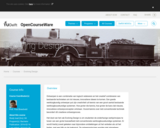
Ontwerpen is een combinatie van logisch redeneren en het creatief combineren van bestaande technieken om tot nieuwe, innovatieve ideeen te komen. Een goede werktuigkundig ontwerper put zijn creativiteit uit kennis van een groot aantal bestaande werktuigbouwkundige systemen. Hoe groter die kennis, hoe groter de kans dat nieuwe, innovatieve ontwerpconcepten ontstaan. Vooral kennis over niet-conventionele techniek bevordert dit creatieve ontwerpproces.
Het doel van het vak Evolving Design is om studenten de onderhavige werkprincipes te tonen van een grote hoeveelheid niet-conventionele werktuigbouwkundige systemen. Er wordt hierbij zowel gekeken naar bijzondere ontdekkingen uit het verleden als uit het heden, met een blik op de toekomst. De ontwerpprincipes worden niet simpelweg opgesomd, maar geplaatst in hun fascinerende, historische ontwikkeling om te laten zien hoe de ontwerpers hun creativiteit en vernuft gebruik(t)en om goedwerkende oplossingen te vinden binnen de beperkingen van de beschikbare fabricageprocessen en beschermingsmogelijkheden (patenten). Veel oplossingen uit het verleden zijn klaar om te worden toegepast in de technologie van de toekomst!
Het vak richt zich primair op het kwalitatief beschrijven van de werkprincipes van bestaande technologieen, met de nadruk op bewegende mechanische constructies. Hoewel het kwantatief, in detail uitwerken van de kracht-bewegingsvergelijkingen niet het hoofddoel van het vak is, zijn mechanische vergelijkingen wel essentieel als zij leiden tot een beter begrip.
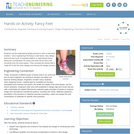
Students use the engineering design process to solve a real-world problem shoe engineering! Working in small teams, they design, build and test a pair of wearable platform or high-heeled shoes, taking into consideration the stress and strain forces that it will encounter from the shoe wearer. They conclude the activity with a "walk-off" to test the shoe designs and discuss the design process.
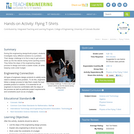
During this engineering design/build project, students investigate many different solutions to a problem. Their design challenge is to find a way to get school t-shirts up into the stands during home sporting events. They follow the steps of the engineering design process to design and build a usable model, all while keeping costs under budget.

Computing Mathematics and Logic units to supplement Code.org's AP CSP course.
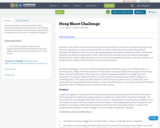
Design and engineer a mechanical device that is powered by hydraulic (syringe and water) that includes levers and moving parts that will propel a ping pong ball to complete the 2 levels of the “Hoop Shoot Challenge”.
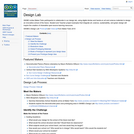
Maker Faire participants collaborate in ISKME's Design Lab, using digital stories and salvaged materials to design an innovative school of the future. The Design Lab features Makers Mauro ffortisimo Di Nucci's deconstructed piano and INKA Biospheric Systems' Vertical Garden; as well as Student and Teacher project examples that integrate art, science, sustainability, and green design inspire the creation of shareable open-source learning resources. This wiki page showcases photos and video from the Design Lab, open educational resources for teachers, and a step by step guide through the design process.

This subject explores the varied nature and practice of computation in design. We will view computation and design broadly. Computation will include both work done on the computer (digital computing) and by-hand. Design will include both the process of making designs and artifacts, as well as the designs and artifacts themselves. The aim of the course is to develop a view of computation and design beyond the specifics of techniques and tools, and a critical, self-awareness of our own approaches and metaphors for computation and design.

In the ICE-Topics courses, various chemical engineering problems are presented and analyzed in an industrial context. Emphasis is on the integration of fundamentals with material property estimation, process control, product development, and computer simulation. Integration of societal issues, such as engineering ethics, environmental and safety considerations, and impact of technology on society are addressed in the context of case studies.
The broad context for this ICE-Topics module is the commonsense notion that, when designing something, one should plan for the off-normal conditions that may occur. A continuous process is conceived and designed as a steady-state operation. However, the process must start up, shut down, and operate in the event of disturbances, and so the time-varying behavior of the process should not be neglected. It is helpful to consider the operability of a process early in the design, when alternatives are still being compared. In this module, we will examine some tools that will help to evaluate the operability of the candidate process at the preliminary design stage, before substantial effort has been invested.
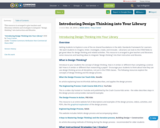
This resource is arranged to give teachers and librarians websites and strategies to integrate “design thinking” into instruction and libraries.

This subject explores the varied nature and practice of computation in design. We will view computation and design broadly. Computation will include both work done on the computer (digital computing) and by-hand. Design will include both the process of making designs and artifacts, as well as the designs and artifacts themselves. The aim of the course is to develop a view of computation and design beyond the specifics of techniques and tools, and a critical, self-awareness of our own approaches and metaphors for computation and design.

Introduction to Design Inquiry explores the nature and exercise of design intelligence. It aims to open avenues for further research and, along them, to open vistas on the teaching of design and on more mindful professional design practices.
We see design as processes located in individuals and groups, shaped by the formation and experience of each individual and by the characteristics of the groups that play a role in the design process. People construct the worlds they inhabit out of what they know and have experienced. So also does the designer, but the designer’s worlds must be possible for others to inhabit and, therefore, to construct. Indeed the success of a design depends in large part on the degree to which these constructive processes yield similar results.
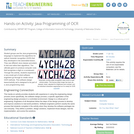
Student groups use the Java programming language to implement the algorithms for optical character recognition (OCR) that they developed in the associated lesson. They use different Java classes (provided) to test and refine their algorithms. The ultimate goal is to produce computer code that recognizes a digit on a scoreboard. Through this activity, students experience a very small part of what software engineers go through to create robust OCR methods. This software design lesson/activity set is designed to be part of a Java programming class.

Students are tasked with designing their own experiment to discover why you cannot add fresh pineapple to Jell-O. After analyzing their results, they will construct a CER that will be used to assess their understanding of the concepts.
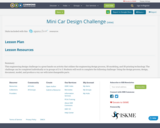
This engineering design challenge is a great hands-on activity that utilizes the engineering design process, 3D modeling, and 3D printing technology. The challenge can be completed individually or in groups of 2 to 3. Students will work to complete the following challenge: Using the design process, design, document, model, and produce a toy car with interchangeable parts.

This engineering design challenge is a great hands-on activity that utilizes the engineering design process, 3D modeling, and 3D printing technology. The challenge can be completed individually or in groups of 2 to 3. Students will work to complete the following challenge: Using the design process, design, document, model, and produce a toy car with interchangeable parts.
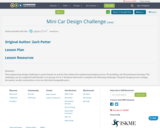
This engineering design challenge is a great hands-on activity that utilizes the engineering design process, 3D modeling, and 3D printing technology. The challenge can be completed individually or in groups of 2 to 3. Students will work to complete the following challenge: Using the design process, design, document, model, and produce a toy car with interchangeable parts.

This engineering design challenge is a great hands-on activity that utilizes the engineering design process, 3D modeling, and 3D printing technology. The challenge can be completed individually or in groups of 2 to 3. Students will work to complete the following challenge: Using the design process, design, document, model, and produce a toy car with interchangeable parts.